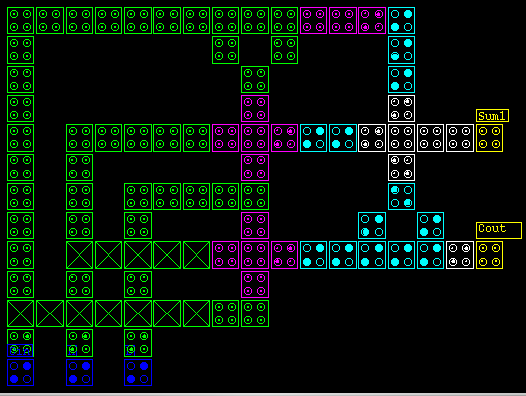Nano-electronics research includes: carbon nanotube devices, nano- and organic electronics, integrated circuits based on Si nanowire transistors, nanoscale electron emitters, nanocomputing using quantum cellular automata, Schroedinger-Poisson solvers for nanotransistors.
Faculty Involved
Research Topics
Carbon Nanotubes

Carbon nanotubes, nanometer-diameter tubes made of carbon atoms, have been gaining ever-increasing popularity since their discovery in 1991 due to their outstanding electronic and mechanical properties. Nanotubes can be used in a wide range of applications including electronic devices such as quantum dots and transistors, electron emitters for flat-panel displays and electron-beam systems, chemical and biological sensors, light-weight composites and nanoscale actuators to name a few.
Flexible Electronics
Interconnects
Nano Device Modelling
Nano scale devices operate based on the principles of quantum mechanics. As a result, new models and methods are being developed to efficiently simulate these devices on today’s computers. Our group is developing these models and algorithms to simulate carbon nanotubes, nanowires, and quantum dots using quantum mechanics. We are exploring methods including molecular dynamics (MD), density functional theory (DFT), and non-equilibrium Green’s functions (NEGF).
Nanowires
Organic Transistors
Quantum Dots
Quantum dots are nanostructures that are able to confine electrons, holes, or excitons in 3-dimensions. They can be realized using semiconductors, metallic islands, and through confinement of 2-dimensional electron gas (2DEG). Quantum dots are used in single electron transistors (SETs), tags for biological studies, lasers, and quantum-dot cellular automata (QCA).
Quantum-dot Cellular Automata (QCA)

Quantum-Dot Cellular Automata (QCA) is an exploratory computing paradigm in which information is encoded in the electronic charge configuration of a QCA cell. Each QCA cell can be constructed with a single molecule, coupled semiconductor quantum dots, metallic islands, or magnetic nanoparticles. The charge and magnetic interaction between neighbouring QCA devices enables the transmission and processing of information.
Super Capacitors

Supercapacitors are electrochemical capacitors that take advantage of the double-layer charge that forms across electrode-solution interfaces. By maximizing the internal surface area available, while minimizing the weight, it is possible to achieve very high specific capacitances. Energy storage density can be further increased by coating porous electrodes with redox active materials that store charges within their volumes.
Vacuum Nano-electronics

The mobility of electrons moving in vacuum does not suffer from the scattering events that are present inside matter. As a result, electronic transport can be very fast in vacuum, making ultra-fast operation possible. Nanoscale devices where the conducting channel is in vacuum are thus becoming more and more attractive as we search for new technologies to make devices working in the THz regime. Highly controllable nanoscale electron emitters are being investigated to make vacuum nano-electronic devices possible.
Research Projects
Protein-based Solar Cell
Plants capture photons very efficiently. Can we learn from them in making photovoltaic devices? We are investigating the use of photosynthetic protein complexes in solar cells, with the aim of creating very low cost solar cells.
Angular rate sensors for Automobile and Biological projects
Gyroscopes are used to sense angular rate and when used along with accelerometers can be used as effective navigation sensors. Due to their tiny size(1cmx1cm)die and high sensitivity they could be used in minimally invasive surgery.